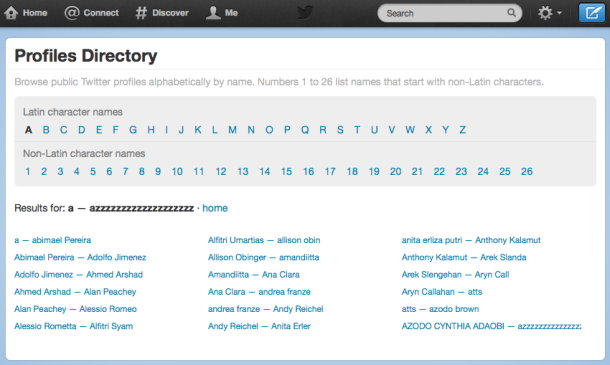by Gabe Zichermann
Despite recent issues with its stock, Facebook remains the juggernaut of social media. With the platform on track to reach a billion users, and a new emphasis on revenue, the company is increasingly focused on how to make social work for business customers.
Currently, the most prolific Facebook feature for business is the brand page. At last count, there were more than 42 million of them, with activity that ranged from 10 likes to millions. As a result, mainstream marketers are increasingly focused on attracting, retaining, and engaging audiences on the platform.
As marketing on Facebook pages grows, so does the interest in using gamification — or the process of leveraging game thinking and mechanics to engage audiences — to drive results. There are actually a number of core patterns and approaches used by the best practitioners. Here are the top six for Facebook marketing, and how to use them.

1. Know Your Funnel
Consider your users’ engagement over time through the shape of a funnel. At the top, there’s the simplest social action they can take — usually liking your page. At the bottom are complex actions like buy, subscribe or refer others. Your goal is to get as many people into the top of the funnel, and as many through it as possible. In order to do this, you need to start by identifying the major waypoints in the process (e.g. read, like, share, link, invite, buy, subscribe) and then track the metrics as users move through. These progress metrics should be shared by everyone on your team, and form an essential part of your dashboard. You can see an example on Fanzy.com, a Facebook gamification provider.
2. Assign Points for Social Actions
There are a wide range of social actions you might want to drive on Facebook, from likes and joins to invitations and messages. One of the simplest and most motivational elements of gamification is a point system for social action. Start by offering a small number of points for every action (say 5 to 10), and consider the relative values of subsequent behaviors. Allow users to see their progress in a score window and potentially in leader boards. Don’t worry just yet about how the points are going to be redeemed. Based on behavior, over time, you’ll add more meaning to the points by making them redemptive towards status and achievements. Of course, if you run a large loyalty program like JetBlue’s, then your Facebook app should leverage your existing point system.
3. Run a Contest
Contests are arguably the oldest gamified Facebook marketing strategy and a great way to use Facebook to drive interest. Generally, the key to running a good contest are clear rules, easy actions, a great prize, and lots of promotion. It’s important to understand however that most contests are not viral and self-perpetuating. There is a disincentive to letting others know about the contest if prizes are limited and not skill-based (e.g. the fewer people play the lottery, the better my odds). If you already have an established user base and want to bring them to Facebook, or you’re doing something skill based — like Panda Express’ Best Photo Contest “Raise the Steaks” — a Facebook contest can be powerful. Contests are also amplified by regularity so consider holding them at defined intervals to encourage appointment dynamics.
4. If You Must, Build a Classic Game
With the ubiquity, power and reach of Facebook games like Farmville it can be very tempting to use your page as a literal gaming platform. Many brands have experimented with offering branded games, whether home-grown or working with white-labels like Qmerce. The results however are usually the same. After an initial spike of interest, users stop playing. This happens because branded games are generally not backed by the same level of design, development or testing investment as commercial games. Put another way: Unless you’re Game of Thronesand enlisting gamification expert Jon Radoff to design your Facebook game, most branded games are bargain basement products.
In general, you should avoid this approach and instead refer users to other Facebook games (and apps) made by quality game developers where your product/service is part of the storyline. Or, you can use editorial angles to engage users in a dialogue about their favorite games as a way of getting and keeping them on the page.
5. Design Gamified Challenges
An alternative to making a traditional game is to design a challenge around gamification. Unlike a classic game, the idea is to engage users in a set of social actions that will produce short-term rewards. Then these small actions are tied together across a campaign that eventually yields data or a prize. An example of this is Oprah’s Thank You Game,which asks users to express their gratitude each day based on a challenge that’s issued via Twitter or Facebook (also see Rihanna or Jay-Z’s branded launch game challenges).
The best challenge approaches focus on simple, authentic actions that anyone can do tied to an appointment dynamic. In the case of Oprah’s Thank You app, the focus on authenticity actually undermines parts of the experience. In particular, the app features a misleading usage counter that turns 45K clicks into a purported reach of 11m users. For users, this can call into question the veracity of the whole experience and is likely somewhat responsible for the slow adoption. Remember to always keep the voice authentic and strive for transparency. Tying these challenges to a charity can also help.
6. Don’t Build it Yourself
The hardest thing about getting gamification right isn’t technology, it’s design. Today, a plethora of technology vendors make it easy to implement gamification technology on and off Facebook. Companies like Bunchball, Badgeville, BigDoor and Gigya offer the tools to make all your engagement objectives come to life. Don’t spend resources building your own technology. Instead, strive to focus your energy on great experience design. Your users will thank you for it. No matter what kind of Facebook presence you’ve imagined for your business, there’s a big difference between just getting some likes and getting real user engagement. Whether content or community are at the center of your strategy, gamification can help drive usage and bridge the gap between clicks and meaningful social activity. Once you’re able to master these interactions using gamification, more complex behaviors such as social commerce and brand advocacy are not only possible but inevitable.












